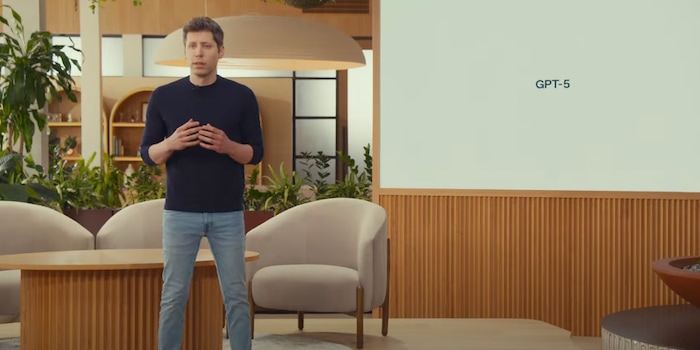
GPT-5 should be more efficient and make fewer mistakes
The new LLM from OpenAI is designed to answer queries more quickly or more thoroughly, depending on their complexity. According to the company, the chatbot also hallucinates significantly less and should also be more efficient.
GPT-5 differs from its predecessors by offering more intelligent control between quick responses and deeper «reflection». Depending on the complexity of the query, a so-called router decides whether the model generates a fast or a reasoning-based response. This should ensure greater efficiency. OpenAI also provides the LLM with four «personalities». Users can choose between «Cynic», «Robot», «Listener» and «Nerd».
Supposedly more performance and fewer errors
Compared to GPT-4o , GPT-5 offers a significantly lower error rate («hallucinations»), according to OpenAI. It also recognises and communicates its own limits better. CEO Sam Altman said at a media conference: «GPT-3 felt like talking to a secondary school student. You might get the right answer to a question, but you might also get something crazy. GPT-4 felt like a student. GPT-5 is a PhD-level expert for the first time.»
In benchmarking, GPT-5 sets new records in maths, programming and multimodal processing. The context length has been extended to 400,000 tokens, which enables longer and more complex conversations. In the coding area, the LLM can implement larger and more complex software projects independently and offers better debugging. According to OpenAI, the model also provides more precise and context-sensitive answers in the healthcare sector. However, the company emphasises that the chatbot does not replace medical advice.
Independent experts assess the leap from GPT-4 to GPT-5 compared to «BBC»as evolutionary, not revolutionary. The operation remains similar, the improvements are mainly in reliability and in handling more complex tasks. The lack of transparency during training and the handling of copyrighted content continue to be criticised.
My fingerprint often changes so drastically that my MacBook doesn't recognise it anymore. The reason? If I'm not clinging to a monitor or camera, I'm probably clinging to a rockface by the tips of my fingers.
From the latest iPhone to the return of 80s fashion. The editorial team will help you make sense of it all.
Show all